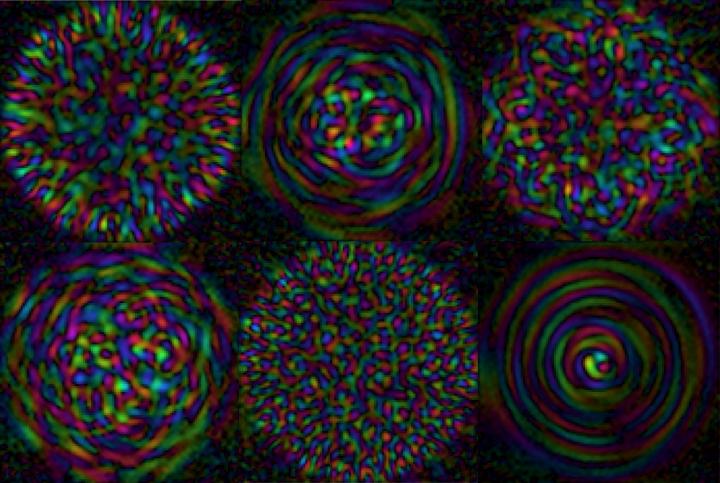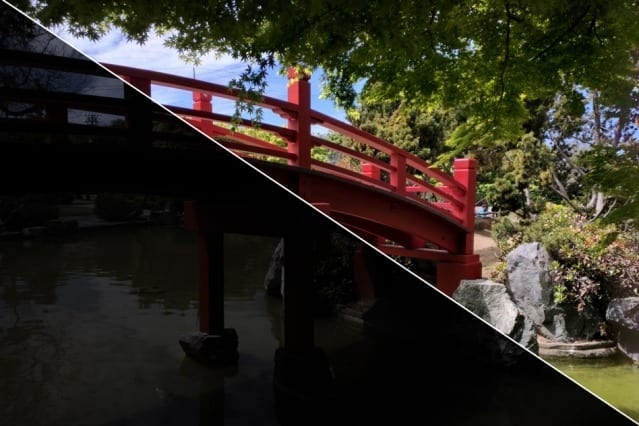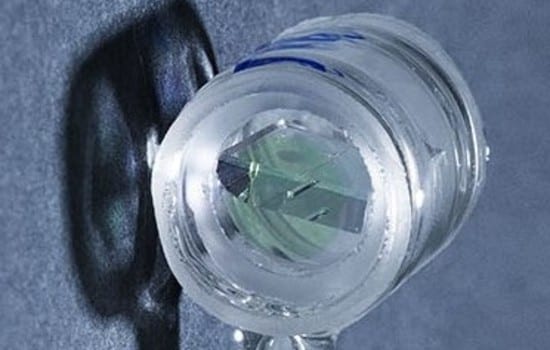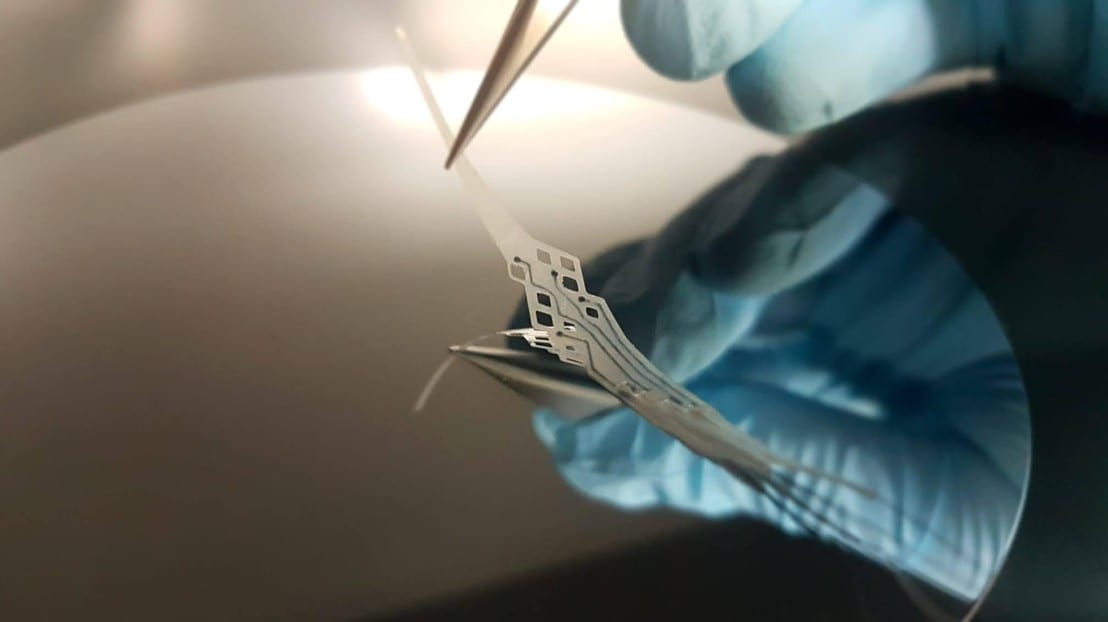
Shown are six patterns depicting how light that has passed through an optical fibre is scrambled. The brightness is proportional to the intensity of the light fields, and the colour is proportional to the optical phase of the light fields
Imaging at the tip of a needle
Scientists have developed a new technique that could revolutionise medical imaging procedures using light.
A team of physicists, led by Dr David Phillips from the University of Exeter, have pioneered a new way in which to control light that has been scrambled by passage through a single hair-thin strand of optical fibre. These ultra-thin fibres hold much promise for the next generation of medical endoscopes – enabling high-resolution imaging deep inside the body at the tip of a needle.
Conventional endoscopes are millimetres wide and have limited resolution – so cannot be used to inspect individual cells. Single optical fibres are approximately 10x narrower and can enable much higher-resolution imaging – enough to examine the features of individual cells directly inside living tissue. It is normally only possible to view cells once they have been taken outside the body and placed in a microscope.
The catch is that we can’t directly look through optical fibres, as they scramble the light sent through them. This problem can be solved by first calibrating an optical fibre to understand how it blurs images, and then using this calibration information as a key to decipher images from the scrambled light. Earlier this year, Dr Phillips’ group developed a way to measure this key extremely rapidly, in collaboration with researchers from Boston University in the USA, and the Liebniz Institute of Photonic Technologies in Germany [paper: Compressively sampling the optical transmission matrix of a multimode fibre, published in Light: Science and Applications, April 21st 2021].
However, the measured key is very fragile, and easily changes if the fibre bends or twists, rendering deployment of this technology in real clinical settings currently very challenging. To overcome this problem, the Exeter based team have now developed a new way to keep track of how the image unscrambling key changes while the fibre is in use. This provides a way to maintain high resolution imaging even as a single fibre based micro-endoscope flexes. The researchers achieved this by borrowing a concept used in astronomy to see through atmospheric turbulence and applying it to look through optical fibres. The method relies on a ‘guide-star’ – which in their case is a small brightly fluorescing particle on the end of the fibre. Light from the guide-star encodes how the key changes when the fibre bends, thus ensuring imaging is not disrupted.
This is a key advance for the development of flexible ultra-thin endoscopes. Such imaging devices could be used to guide biopsy needles to the right place, and help identify diseased cells within the body.
Dr Phillips, an Associate Professor in the Physics and Astronomy department at the University of Exeter, said: “We hope that our work brings the visualisation of sub-cellular processes deep inside the body a step closer to reality – and helps to translate this technology from the lab to the clinic.”
Original Article: Imaging at the tip of a needle
More from: University of Exeter | Boston University
The Latest Updates from Bing News & Google News
Go deeper with Bing News on:
Medical imaging
- Wentworth-Douglass Hospital honored for 25 years of heart imaging accreditation
Wentworth-Douglass Hospital has received a “silver milestone” award from the Intersocietal Accreditation Commission.
- Imaging Endpoints Unveils Emboldened Path to Advance Precision Medicine with Revolution Endpoints™
Imaging Endpoints IE, a global leader in Imaging CRO technologies and services, has announced the formation of a new subsidiary, Revolution Endpoints, focused on leveraging the Companys strong ...
- RapidAI’s AngioFlow imaging solution gains FDA 510(k) clearance
"RapidAI’s AngioFlow imaging solution gains FDA 510(k) clearance" was originally created and published by Medical Device Network, a GlobalData owned brand. The information on this site has been ...
- Breakthrough imaging technique enhances evaluation of cardiac conditions and chest pain
A new imaging technique tested in patients could improve the evaluation of cardiac conditions and undiagnosed chest pain.
- PocketHealth announces free patient access to medical imaging records
“Being able to access their medical imaging records means more patients will be able to actively participate in their health journey and collaborate more effectively with their healthcare providers.” ...
Go deeper with Google Headlines on:
Medical imaging
[google_news title=”” keyword=”medical imaging” num_posts=”5″ blurb_length=”0″ show_thumb=”left”]
Go deeper with Bing News on:
Flexible ultra-thin endoscopes
- Powering drones with ultra-thin, flexible perovskite PV cells
An Austrian research team has demonstrated lightweight, flexible and ultra-thin perovskite solar technology in palm-sized autonomous drones, showcasing the stability and energy-harvesting potential of ...
- Flexible pseudocapacitor defies climate extremes, packs energy punch
In today's rapidly evolving technological landscape, the demand for reliable energy storage solutions has never been greater. With our reliance on electronic devices growing, especially in aviation, ...
- GI & Endoscopy E-Newsletter
To sign up for Becker's GI & Endoscopy E-Newsletter or any of our other E-Newsletters, click here. If you are experiencing difficulty receiving our newsletters, you may need to whitelist our new ...
- Ultra-thin, flexible solar cells demonstrate their promise in a commercial quadcopter drone
Whether on Earth or in space, autonomous energy is critical in order to keep power systems running independently for extended periods of time, particularly in remote or unpredictable environments.
- Opening up the potential of thin-film electronics for flexible chip design
The mass production of conventional silicon chips relies on a successful business model with large 'semiconductor fabrication plants' or 'foundries'. New research by shows that this 'foundry' model ...
Go deeper with Google Headlines on:
Flexible ultra-thin endoscopes
[google_news title=”” keyword=”flexible ultra-thin endoscopes” num_posts=”5″ blurb_length=”0″ show_thumb=”left”]










